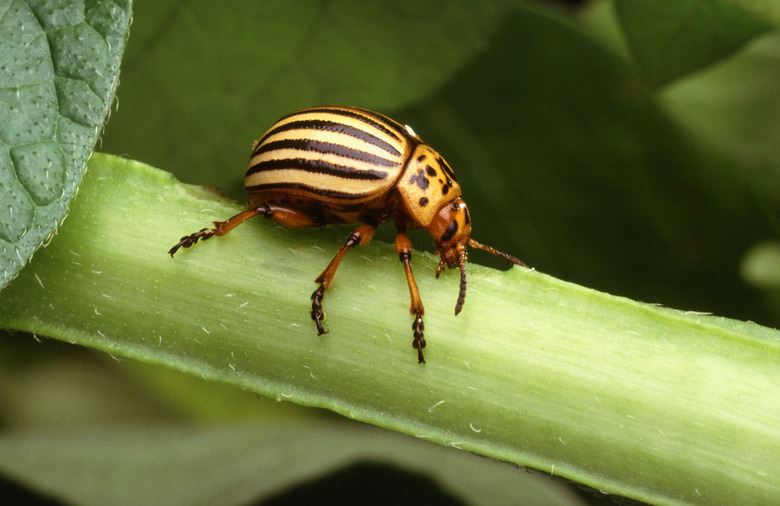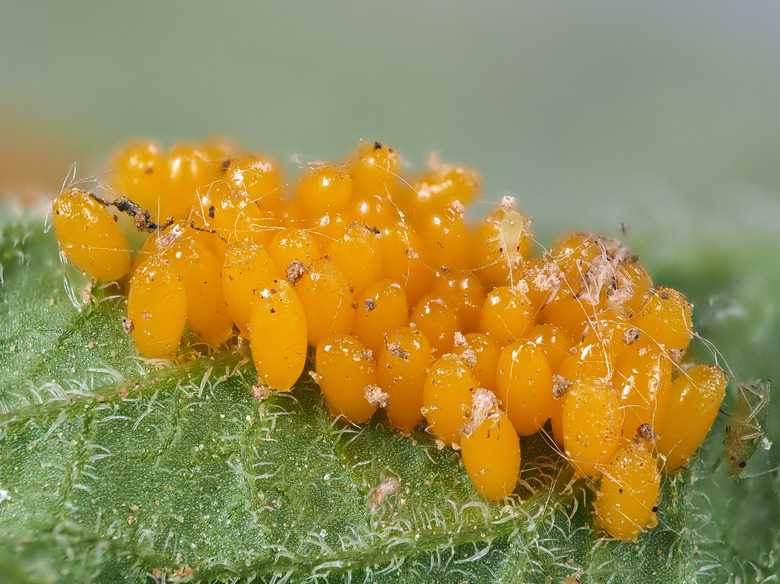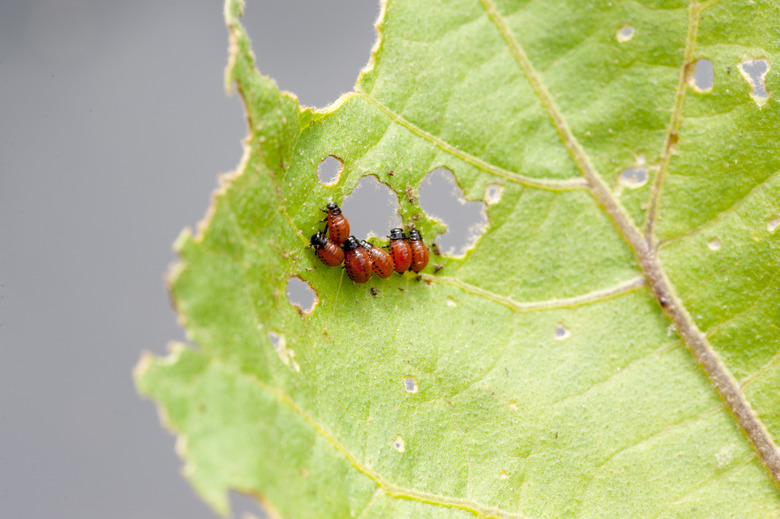How To Kill Potato Bugs With A Home Remedy
The Colorado potato bug (Leptinotarsa decemlineata) doesn't limit its damage to just the state of Colorado. The destructive insect can be found throughout North America and is a difficult pest to eradicate.
Resorting to chemical pest control or potato bug spray isn't suggested, as the bug has established resistance to most and is immune to the chemicals they contain. Manual or organic defoliation of the bugs is your best potato bug killer.
In addition to the potato, the bug also attacks eggplant, nightshade, peppers and tomatoes. Plant management techniques, including hand picking, are suggested.
Potato Bug Life Cycle
After overwintering as adults, you'll start noticing potato bugs emerging in the spring. They'll immediately start laying eggs on the underside of the leaves in groups of up to 10 to 30 eggs, laying an estimated 500 more eggs over a four- to five-week period.
Depending on the temperatures, the eggs will hatch within two weeks, and the fun begins. The larvae will immediately start munching on the leaves, and it's prudent to eliminate them at this stage.
Recognize the larvae by their humped back and two rows of black spots on each side. This stage lasts about two weeks and inflicts severe damage to the crop.
Natural Control of Potato Bugs
Beneficial insects and wildlife help control the potato bug infestation. Birds, ladybugs, predatory stink bugs, lady beetles and parasitic flies help remove the bugs from your plants.
Netting wrapped around the potato leaves before the spring emergence of the adults is another preventative. Keeping your garden clean of weeds, ground cover and any leafy food source helps control the infestation. Growing potatoes every other year when temperatures are moderate and spacing the patch 1/4 to 1/2 mile from other potatoes also helps bug control.
It may also help to lay garlic or horseradish at the base of the plant. The odor will deter the pests.
Manual Removal of Potato Bugs
Grab a pair of thin gloves, such as surgical gloves, and start picking the bugs off the leaves. Shaking the leaves causes them to drop, and it is suggested that you place a bucket of warm, soapy water under the leaves as you remove the bugs.
If you find eggs under the leaves, crush them and drop them into your soapy water. This remedy needs to be checked frequently, as new bugs will arrive, and the routine begins again.
Once you've removed the majority of the potato bugs, spread wheat bran around the leaves. Any remaining bugs will consume the bran, expanding their stomach and causing death.
Tip
Crop rotation of fields at least 200 yards away from previous fields helps in the control of potato bugs. Plant barrier crops to isolate the potatoes.
Cocktails of Death
You can also make a homemade all-purpose spray cocktail that destroys most destructive bugs, including potato bugs: In a 1-gallon pitcher filled with warm water, add 2 teaspoons of dishwashing soap and spray thoroughly. To spice up your homemade spray and create a diverting odor, try adding oil, a clove of garlic and/or cayenne pepper into the solution and add warm water. Stir the mixture.
Transfer the solution to a spray bottle. The soap and water will suffocate the bugs while the oil, garlic and cayenne leave a pungent smell that wards off the bugs.
You can also use a homemade spray to ward off bugs and insects by mixing 10 to 20 drops of essential oil with 2 ounces of distilled water and 2 ounces of white vinegar.
Tip
Eliminating 100 percent of the bugs isn't necessary. Potato crops can withstand 15 to 20 percent defoliation without affecting yields.


